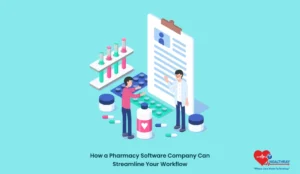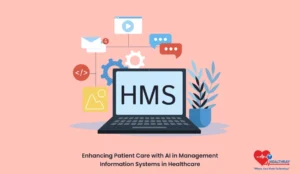Running a pharmacy is no small feat. Between managing inventory, tracking sales, and ensuring compliance with ever-changing regulations, there’s no shortage of tasks to juggle. If you’ve ever felt like you’re doing more paperwork than patient care, you’re not alone.
This is where a Pharmacy Management System (PMS) comes into play. A PMS can transform how you operate, making your workflow smoother, faster, and less stressful. From automated inventory tracking to real-time reporting, these systems can simplify even the most complex processes.
In this guide, we’ll break down everything you need to know about PMS systems. We’ll cover their benefits, features, and how to choose the right one for your pharmacy. By the end, you’ll have all the tools to make an informed decision and take your pharmacy operations to the next level.
Understanding Pharmacy Management Systems
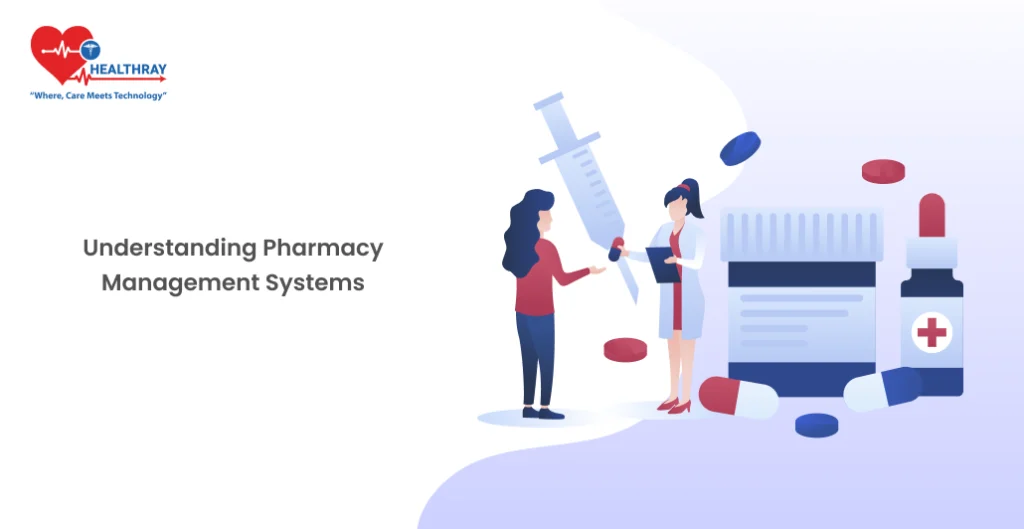
Pharmacy Management Systems (PMS) have revolutionized the way pharmacies operate. These systems are not just about managing prescriptions—they are comprehensive tools designed to simplify the day-to-day operations of pharmacies, helping owners and staff focus more on patient care and less on administrative hassles.
What is a Pharmacy Management System?
A Pharmacy Management System is a software solution tailored specifically for the needs of pharmacies. It helps automate and manage tasks like prescription processing, inventory tracking, billing, and regulatory compliance. By integrating various functions into one platform, a PMS eliminates manual errors and saves valuable time.
Key Features of a PMS
Here are the must-have features of a robust Pharmacy Management System:
- Inventory Management: Tracks stock levels in real-time, alerts when items are running low, and helps prevent overstocking or stockouts.
- Prescription Management: Automates prescription processing, including electronic prescriptions, refills, and patient records.
- Billing and Payment Processing: Simplifies billing with integrated payment gateways, insurance claim management, and detailed financial reporting.
- Regulatory Compliance: Ensures that your pharmacy stays compliant with local and international healthcare regulations by maintaining proper documentation and tracking.
- Customer Relationship Management (CRM): Maintains patient records, tracks purchase history, and even sends reminders for medication refills.
- Reporting and Analytics: Provides detailed insights into sales, inventory, and operational performance, enabling data-driven decisions.
- Integration Capabilities: Connects seamlessly with other systems like Electronic Health Records (EHR) and accounting software for streamlined operations.
Why Should You Consider a PMS?
Pharmacy owners often grapple with a variety of challenges, such as maintaining accurate records, meeting customer expectations, and managing increasing operational costs. A PMS addresses these pain points by:
- Reducing manual errors in critical tasks like inventory management and billing.
- Saving time by automating routine processes.
- Enhancing customer satisfaction with faster service and accurate records.
- Supporting growth by providing scalable features that adapt as your pharmacy expands.
By understanding what a PMS is and the features it offers, you’re already one step closer to making an informed choice. In the next section, we’ll dive deeper into the specific benefits a PMS brings to your pharmacy operations.
Benefits of Implementing a Pharmacy Management System
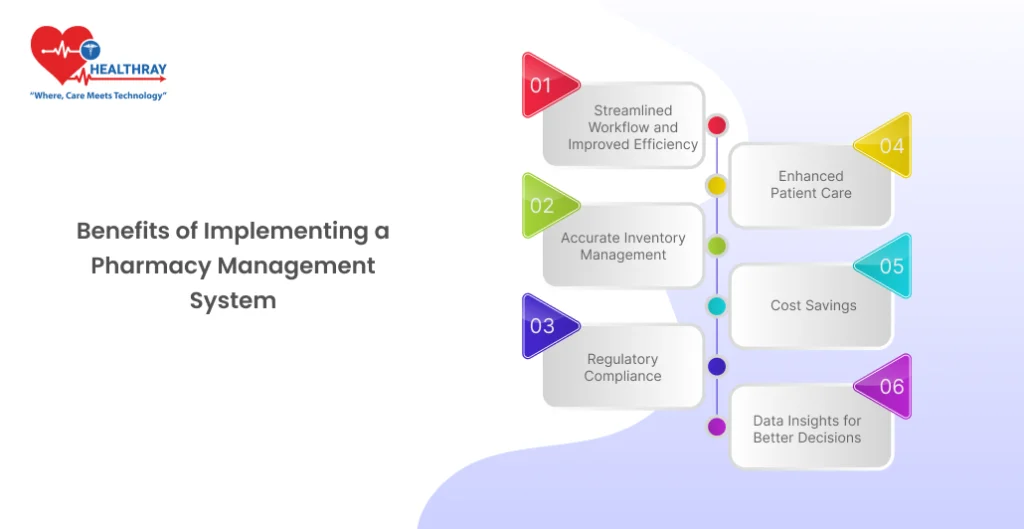
Introducing a Pharmacy Management System (PMS) into your operations is more than just a technological upgrade—it’s a game-changer for efficiency, compliance, and customer satisfaction. Let’s break down the key benefits your pharmacy can reap by implementing a PMS.
Streamlined Workflow and Improved Efficiency
Pharmacies often deal with repetitive tasks that consume time and resources. A PMS automates these processes, from managing prescriptions to generating invoices. This means staff can focus more on patient care rather than manual administrative work.
For example:
- Automated Prescription Handling: Reduces time spent on manual entries and ensures accuracy.
- Quick Billing: Speeds up the checkout process, reducing customer wait times.
Accurate Inventory Management
Stock mismanagement is one of the biggest challenges in running a pharmacy. A PMS provides real-time inventory tracking, ensuring you’re never out of essential medicines or stuck with expired stock.
Key highlights include:
- Alerts for low stock levels.
- Automated stock ordering to prevent shortages.
- Tracking expiry dates to minimize waste.
Regulatory Compliance
Healthcare regulations are complex and ever-changing. Non-compliance can result in penalties or even license suspension. A PMS helps you stay on top of these requirements by:
- Maintaining accurate records for audits.
- Generating reports to meet compliance standards.
- Tracking controlled substances to ensure legal adherence.
Enhanced Patient Care
With a PMS, your pharmacy can deliver faster and more reliable service. This system keeps accurate patient records, sends refill reminders, and ensures prescriptions are filled correctly.
Added benefits include:
- Improved customer trust with faster service.
- Personalized care with access to detailed patient histories.
- Easy coordination with doctors and other healthcare providers.
Cost Savings
Though implementing a PMS might seem like a significant investment, it saves money in the long run. By reducing manual errors, preventing stock wastage, and increasing operational efficiency, pharmacies can operate more profitably.
Data Insights for Better Decisions
A PMS doesn’t just streamline operations—it also provides valuable insights through analytics and reporting. These tools help identify trends in sales, monitor staff performance, and pinpoint areas needing improvement.
For example:
- Seasonal demand trends for specific medications.
- Revenue insights from detailed sales reports.
Choosing the Right Pharmacy Management System
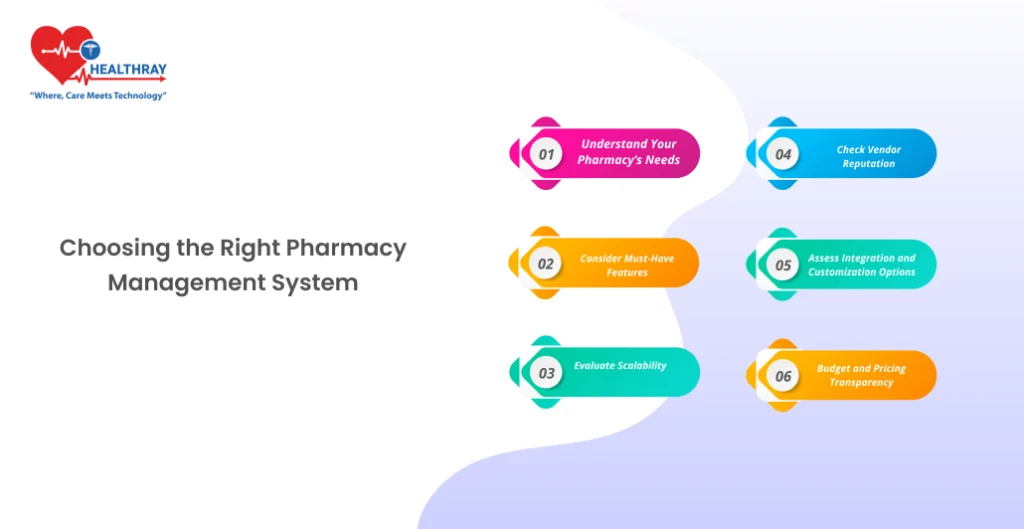
Not all PMS Softwares are created equal. The key to unlocking maximum value lies in selecting one that aligns with your pharmacy’s unique needs. Let’s explore how you can make the right choice.
Understand Your Pharmacy’s Needs
Every pharmacy operates differently. A small neighborhood pharmacy may prioritize ease of use, while a larger chain might need advanced reporting and integration capabilities. Begin by assessing:
- Pharmacy size: Small, medium, or large?
- Operations: What tasks take up the most time, and where are inefficiencies?
- Customer expectations: Are you focusing on faster service, better inventory, or regulatory compliance?
Consider Must-Have Features
When comparing options, ensure the PMS covers your essential requirements. Refer to these key features:
- Inventory tracking and alerts.
- Electronic prescription management.
- Regulatory compliance tools.
- Integration with other systems (e.g., EHR or billing software).
- User-friendly interface for staff.
Evaluate Scalability
A PMS is a long-term investment. Choose a system that grows with your pharmacy. Check if it offers:
- Add-on modules for expanding operations.
- Support for multiple locations if needed in the future.
Check Vendor Reputation
A PMS is only as good as the company behind it. Research vendors thoroughly:
- Customer reviews: Read what other pharmacy owners say.
- Industry expertise: Look for vendors specializing in pharmacy solutions.
- Support and training: Ensure they provide ongoing customer service and training for staff.
Assess Integration and Customization Options
The right PMS should seamlessly integrate with your existing tools, like accounting software or patient databases. Customization is also important—every pharmacy is different, so your system should adapt to your specific workflows.
Trial and Demonstration
Most reputable vendors offer free trials or live demonstrations. Use this opportunity to:
- Test the system’s usability and interface.
- Get feedback from staff who will be using it daily.
- Assess if the PMS meets your requirements without unnecessary complications.
Budget and Pricing Transparency
PMS costs can vary significantly. Some systems require a one-time purchase, while others have monthly subscription fees. When comparing costs, include:
- Setup and installation fees.
- Training and support costs.
- Future expenses for upgrades or add-ons.
Implementation Process: How to Successfully Deploy a Pharmacy Management System
Once you’ve chosen the right Pharmacy Management System (PMS), the next step is implementing it seamlessly into your pharmacy operations. Proper planning and execution during this stage can make the transition smoother and minimize disruptions to your business.
Create an Implementation Plan
Start with a detailed roadmap that outlines:
- The implementation timeline.
- Key milestones, like staff training and data migration.
- A list of responsibilities for your team and the vendor.
Having a clear plan ensures everyone stays on the same page and avoids last-minute surprises.
Prepare Your Team
Successful adoption of a PMS hinges on your team’s comfort and confidence with the new system. Involve them early and often by:
- Explaining how the PMS will benefit their daily work.
- Addressing concerns or resistance to change.
- Scheduling hands-on training sessions for all staff members.
Encouraging a positive mindset about the system’s benefits will make your team more receptive to learning and using it effectively.
Migrate Data Carefully
Transferring existing data, like patient records, inventory lists, and sales history, is a crucial step. Here’s how to make it seamless:
- Perform a thorough data audit to ensure accuracy.
- Work closely with the vendor for error-free migration.
- Backup all critical data before initiating the transfer.
Starting with clean and organized data sets avoids operational hiccups after going live.
Set Up and Test the System
Before making the PMS fully operational, perform a system test to identify and resolve any potential issues. Focus on:
- Verifying all integrations (e.g., with EHR or billing systems).
- Running trial transactions to ensure accurate billing and inventory updates.
- Testing user roles and permissions for security.
A robust testing phase ensures the system runs smoothly when deployed in a live environment.
Roll Out in Phases
If possible, avoid a complete switch to the new PMS all at once. Rolling it out in phases helps your team adapt gradually and minimizes disruptions. For instance:
- Start with one feature, like inventory management, before activating other modules.
- Allow staff to get comfortable with the system incrementally.
This phased approach ensures a smoother transition and reduces the risk of overwhelming your team.
Provide Ongoing Training and Support
Even after the PMS goes live, continuous learning and support are essential for long-term success. Keep these in mind:
- Offer refresher courses for staff members.
- Ensure the vendor provides responsive technical support for troubleshooting.
- Regularly review new features or updates from the vendor.
Proper training and support reduce errors and improve overall satisfaction with the system.
Monitor and Optimize Usage
Track the system’s performance and user feedback post-implementation. Look for areas where adjustments are needed:
- Are there features staff find challenging to use?
- Is the system delivering the expected time and cost savings?
- Are there opportunities to integrate additional tools?
Regularly reviewing the PMS’s impact ensures it continues to deliver value as your pharmacy evolves.
Case Studies: Real-World Success Stories with a Pharmacy Management System
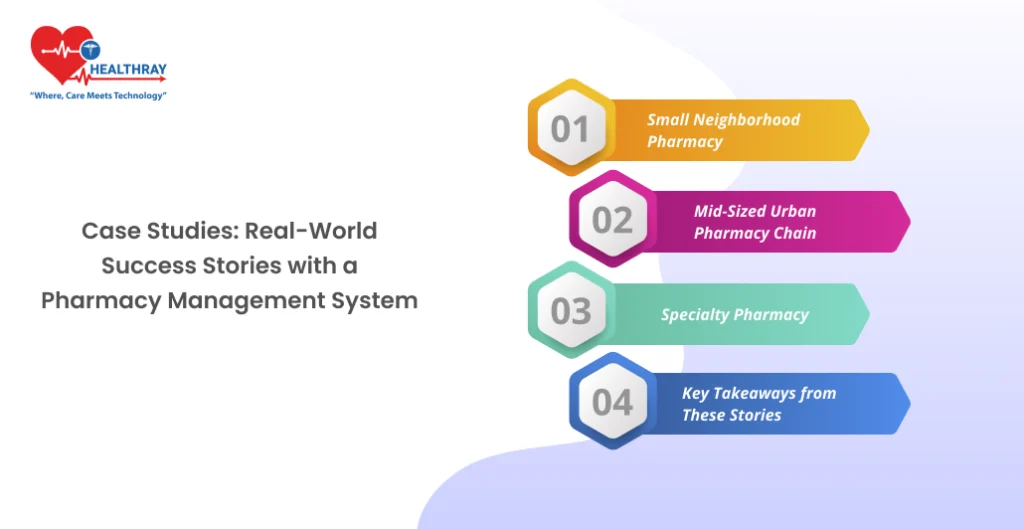
Let’s take a closer look at how pharmacies like yours have transformed their operations by adopting a Pharmacy Management System (PMS). These examples highlight the tangible benefits and real-world impact of implementing a PMS.
Small Neighborhood Pharmacy
Challenge: A family-owned pharmacy struggled with manual inventory management, leading to frequent stockouts and overstocking of less-used medicines. Customers often complained about unavailable medications, causing frustration and loss of business.
Solution: The pharmacy implemented a PMS with robust inventory tracking and automated stock reordering.
Results:
- Inventory levels were optimized, ensuring high-demand items were always in stock.
- Stockouts decreased by 85%, and customer satisfaction improved significantly.
- The system saved staff an average of 10 hours per week by automating inventory processes.
Mid-Sized Urban Pharmacy Chain
Challenge: A regional pharmacy chain faced challenges with managing operations across multiple locations. Keeping track of sales, stock, and compliance data manually was time-consuming and error-prone.
Solution: The pharmacy chain adopted a scalable PMS that integrated all locations into one unified platform, offering centralized reporting and inventory control.
Results:
- Streamlined operations across all branches, with real-time visibility into inventory levels.
- Centralized data enabled faster decision-making for reordering and promotions.
- Improved compliance tracking reduced the risk of penalties during audits.
Specialty Pharmacy
Challenge: A specialty pharmacy managing high-value medications needed a system to handle strict regulatory compliance and maintain detailed patient records for complex prescriptions.
Solution: The pharmacy selected a PMS with advanced features like controlled substance tracking, electronic health record (EHR) integration, and compliance monitoring.
Results:
- Regulatory audit preparedness improved significantly, with detailed logs and reports readily available.
- EHR integration enhanced collaboration with healthcare providers, leading to better patient outcomes.
- The PMS reduced prescription processing errors by 90%, improving overall trust and reliability.
Key Takeaways from These Stories
- A PMS is not one-size-fits-all. The choice of system should align with your pharmacy’s specific challenges and goals.
- Automation reduces human errors and saves valuable time, allowing pharmacies to focus on customer care.
- Real-time data empowers pharmacy owners to make informed decisions and stay ahead in a competitive market.
These real-world examples prove that a Pharmacy Management System is an investment worth making. In the next section, we’ll address some of the most common questions pharmacy owners have when considering a PMS.
Conclusion
Managing a pharmacy comes with its own set of unique challenges, but a Pharmacy Management System (PMS) can make those challenges far more manageable. From streamlining daily operations to ensuring regulatory compliance, a PMS is more than just a convenience—it’s a necessity in today’s fast-paced healthcare environment.Investing in the right Hospital Management System helps you save time, reduce errors, and focus on what truly matters: providing excellent patient care. By automating routine tasks and offering real-time insights, a PMS empowers you to make smarter decisions and grow your business sustainably.


